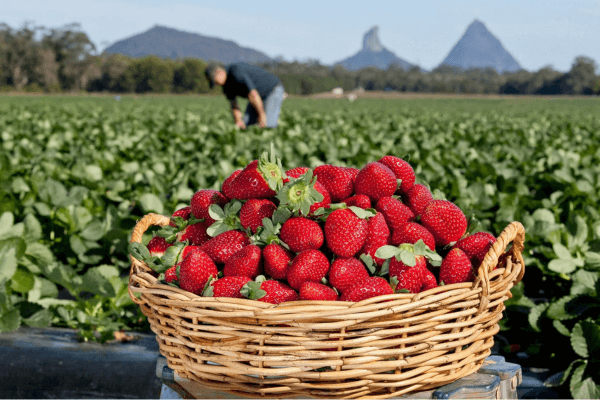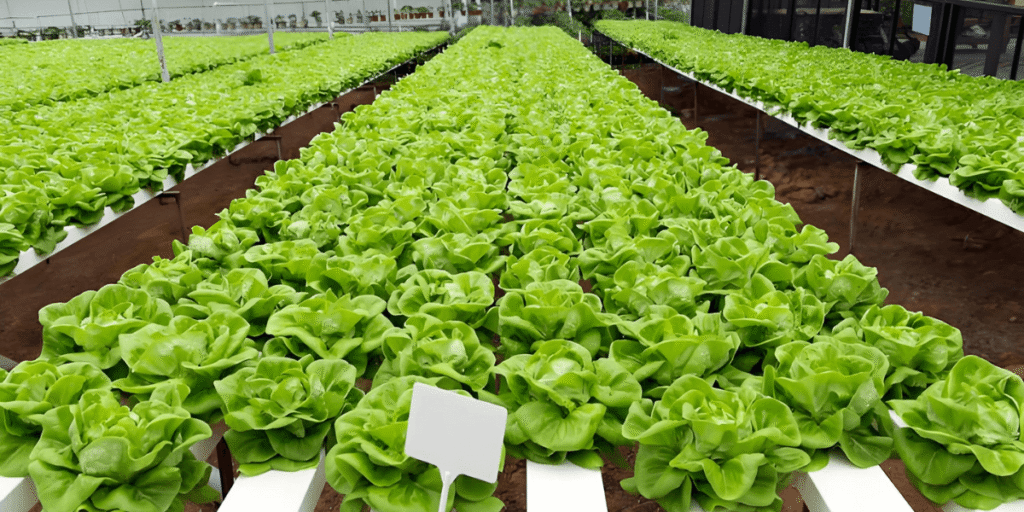Working principle of hydroponics explains how plants grow without soil, using water rich in nutrients. This method, refined from ancient techniques by modern science, allows faster growth, higher yields, and efficient use of resources.
Hydroponic systems help tackle challenges like shrinking farmland, scarce water, and unpredictable weather. By delivering nutrients directly to roots, plants thrive in a controlled environment, making food production more sustainable and reliable.
What is Hydroponics? The Core Principle of Hydroponic Systems
At its core, hydroponics is all about giving plants exactly what they need, right at their roots. Rather than relying on soil to supply nutrients, the plant roots are suspended in or regularly exposed to a nutrient-rich solution, carefully balanced and dissolved in water. This direct method ensures that the plants absorb the nutrients they need more efficiently, leading to healthier and faster growth.
The fundamental idea is straightforward: supply essential minerals, water, and oxygen directly to the plant’s roots in a controlled environment. This approach not only eliminates the risk of soil-borne diseases and pests but also conserves resources and enables year-round cultivation in various settings.
Unveiling the Science: How the Principle of Hydroponics Works
Understanding the science behind hydroponics is key to appreciating its efficiency. It’s more than just growing plants in water; it’s about creating an optimized environment for root development and nutrient absorption.
Plant Nutrition in a Liquid Medium: How Hydroponics Really Works
Plants need 17 essential elements to grow well. In traditional farming, they get these nutrients from the soil, but in hydroponics, everything they need is dissolved right into the water. This allows you to control exactly what your plants receive and in what amounts, making growth more efficient and predictable.
The main nutrients that plants use in large quantities are nitrogen, phosphorus, and potassium. These support leaf growth, root development, and fruit production. There are also secondary nutrients such as calcium, magnesium, and sulfur, which help build strong cell walls and support photosynthesis. In addition, plants rely on small but vital traces of elements like iron, manganese, zinc, copper, boron, molybdenum, chlorine, and nickel. Even though these micronutrients are needed in tiny amounts, they play important roles in keeping plants healthy and balanced.
In a hydroponic setup, the nutrient solution acts like the plant’s lifeblood. It delivers all these elements directly to the roots through the water, ensuring the plants get exactly what they need to thrive without relying on soil.

The Role of Water, Oxygen & pH in Hydroponics Systems
Water is the foundation of any hydroponic system, but oxygen plays an equally important role. Just like us, plant roots need oxygen to breathe and stay healthy. Without enough of it, the roots can’t function properly and will eventually suffocate. That’s why hydroponic setups use things like air stones, water pumps, or timed flooding and draining cycles to make sure the roots always have access to oxygen.
Another key part of the equation is pH. This measures how acidic or alkaline the nutrient solution is, and it has a huge impact on how well plants can absorb nutrients. Most hydroponic crops grow best when the pH stays between 5.5 and 6.5. If the pH drifts too far outside that range, some nutrients can become unavailable to the plants, even if they’re still in the water. Regularly checking and adjusting pH helps keep everything balanced so your plants can take in what they need to grow strong and healthy.
Beyond Sunlight: The Importance of Light in Hydroponic Principles
Light is one of the most important factors in any hydroponic setup, whether you’re growing in a sunny greenhouse or a completely indoor system. Some growers rely on natural sunlight, but many choose artificial grow lights to have full control over how much and what kind of light their plants get.
Modern LED grow lights are especially popular because they can be customized to provide the exact light spectrum plants need. Blue light encourages strong leaf and stem growth, while red light helps trigger flowering and fruiting. By using the right mix of these light types, you can keep photosynthesis running efficiently and help your plants produce more,no matter what the weather is like outside.
Diverse Hydroponic Systems: Tailoring Growth to Hydroponic Principles
Hydroponics isn’t a one-size-fits-all method. There are many different systems, each with its own advantages depending on your space, budget, and the types of plants you want to grow. The main goal of all these systems is the same to deliver water, nutrients, and oxygen directly to the plant roots in the most efficient way possible.
| Hydroponic System | How It Works | Best For | Advantages | Considerations |
|---|---|---|---|---|
| Deep Water Culture (DWC) | Roots hang in a nutrient solution that’s kept oxygenated by air pumps. | Leafy greens (lettuce, spinach) | Simple setup, fast growth | Needs proper oxygenation to prevent root rot |
| Nutrient Film Technique (NFT) | A thin film of nutrient solution flows over roots in a sloped channel. | Herbs, salad greens | Efficient water use, continuous nutrition | Sensitive to pump failures |
| Drip System | Nutrients drip directly to each plant through emitters. | Tomatoes, peppers | Precise control, scalable | Requires maintenance to prevent clogging |
| Wick System | A wick draws nutrients from reservoir to growing medium. | Small herbs, houseplants | Low-cost, no power needed | Limited for large plants |
| Ebb and Flow | Tray floods and drains in cycles, giving roots air and nutrients. | Leafy greens, strawberries | Good oxygen balance, flexible | Needs timer and flood control |
| Aeroponics | Roots hang in air and are misted with nutrient solution. | High-value crops | Maximum oxygen, fastest growth | High cost, requires precision |

Transforming Agriculture: The Hydroponic Working Principle in Practice
The move toward hydroponics isn’t just about adopting a new growing method it marks a complete transformation in how we think about sustainable food production.
Radical Resource Conservation in Hydroponics: The Heart of the Concept
One of the biggest advantages of hydroponics lies in its incredible efficiency with water. Because the system continuously recirculates the nutrient solution, very little is wasted through evaporation or runoff. Compared with traditional soil farming, hydroponics can reduce water use by as much as 90 to 95 percent. To put that into perspective, producing a pound of tomatoes in a hydroponic setup can use around 80 percent less water than growing the same amount in soil. This makes hydroponics a vital solution for regions facing water scarcity.
Space use is another major strength. Since plants don’t rely on soil, they can be placed much closer together, and even stacked vertically in layers. This compact design allows a single acre of hydroponic vertical farm to produce the same yield as hundreds of acres of conventional farmland, helping protect valuable agricultural land while increasing productivity.
Environmental & Crop Quality Benefits of Hydroponics Systems
One of the greatest strengths of hydroponics is its ability to create a clean, controlled growing environment. Because most systems are protected from outdoor pests and diseases, there’s little to no need for chemical pesticides, herbicides, or fungicides. The result is produce that’s fresher, safer, and free from harmful residues while also preventing agricultural runoff that can harm surrounding ecosystems.
Hydroponic farms can also be built close to where people live, such as in cities or even inside buildings. This drastically reduces the distance food travels from farm to table, cutting down on transportation emissions and helping lower the carbon footprint of food production.
When it comes to productivity, hydroponics is hard to beat. By carefully controlling water, nutrients, and light, plants grow faster and more consistently than in soil. Many hydroponic crops, like lettuce, can grow 30 to 50 percent faster and be harvested several times a year instead of just once or twice.
The quality of hydroponic produce also tends to stand out. Because the environment is so stable, crops are more uniform in size, flavor, and nutrition. Growers can even adjust nutrient formulas to boost sweetness, enhance color, or increase vitamin content. And since there’s no soil involved, the produce comes out naturally clean and ready to eat.
Economic & Social Impacts: Hydroponics and Its Working Principle
Hydroponic farming offers a reliable way to grow food year-round, no matter what the weather is doing outside. Because these systems aren’t affected by droughts, floods, or temperature swings, growers can produce consistent harvests throughout the year. This kind of predictability helps strengthen food security and ensures that fresh produce is available even in regions with challenging climates.
The rise of hydroponics also brings new economic opportunities. It creates jobs that require skills in plant science, engineering, automation, and urban farming. Entrepreneurs and innovators can develop new business models around indoor farming, technology solutions, and sustainable food production, driving growth in the sector.
Hydroponics can also make a real difference in communities that struggle with access to fresh food. By setting up farms directly in urban neighborhoods, it’s possible to bring healthy, nutritious produce closer to people who live in food deserts. This not only improves diets but also strengthens local communities by connecting people with the food they eat.
Navigating the Hydroponic Landscape: Challenges in the Working Principle
Although the benefits of hydroponics are obvious, expanding these systems comes with its own challenges and opportunities for innovation.
Challenges Facing Hydroponic Adoption and Key Considerations
Setting up a hydroponic system, especially for commercial operations, can require a significant upfront investment. Costs for infrastructure, pumps, reservoirs, and grow lights add up quickly, making the initial capital one of the biggest hurdles.
Energy use is another factor to consider. While hydroponics is efficient with water and nutrients, pumps, lighting, and climate control all consume electricity. Incorporating renewable energy sources can help make large-scale operations more sustainable.
Hydroponic systems also demand careful attention and technical know-how. Keeping pH levels, nutrient concentrations, and environmental conditions in check requires constant monitoring. Mistakes can impact plant health much faster than in traditional soil farming.
Disease management is critical because waterborne pathogens can spread quickly through the system, potentially affecting all plants in a short time.
Finally, the range of economically viable crops is still somewhat limited. Hydroponics works best for high-value, fast-growing plants like leafy greens, herbs, strawberries, and tomatoes. Staple grains are generally too costly to grow hydroponically at a commercial scale.

The Future of Hydroponics: Innovations Shaping Modern Farming
Hydroponics is evolving quickly, and new technologies are making it more efficient, sustainable, and versatile than ever.
Artificial intelligence is starting to play a big role in precision farming. Smart sensors can monitor nutrient levels, pH, temperature, and light in real time, and AI can use that data to adjust conditions automatically. This helps plants get exactly what they need, detects stress or disease early, and reduces waste.
Automation and robotics are also transforming hydroponic farms. Robots can handle seeding, transplanting, harvesting, and even packaging, cutting labor costs and improving accuracy.
Energy use is another focus area. More farms are integrating renewable sources like solar and wind power to operate with lower carbon footprints, making large-scale hydroponics more sustainable.
Researchers are also working to expand the range of crops that can be grown hydroponically. The goal is to make indoor cultivation of staple foods economically viable, which could help improve food security worldwide.
Finally, hydroponic farms are moving toward circular systems. Water and nutrients are recycled, plant waste can be turned into compost or bioenergy, and farms are being integrated with local food networks, creating a more sustainable and self-sufficient model for agriculture.
Global Impact: Hydroponics in Action and Its Core Principle
Hydroponics is more than just a concept; it is becoming a global movement. From large urban farms in New York such as AeroFarms and Bowery Farming, to innovative projects in arid regions of the Middle East and climate-controlled farms in Japan, hydroponic systems are addressing real-world food challenges. These setups can consistently produce fresh, high-quality crops, even in harsh environments, supporting local economies and boosting food security.
One of the biggest advantages of hydroponics is its farm-to-table efficiency. Growing food close to where it will be consumed drastically shortens the time from harvest to plate. This means fresher produce with higher nutrient content and significantly less food waste along the supply chain. Considering that nearly a third of the world’s food is lost or wasted, often during transport, hydroponics offers a practical, sustainable solution by reducing waste and providing a local source of fresh, healthy food.
Common Questions About Hydroponic Systems and Their Fundamentals
Q1: How often should I check my hydroponic system?
A: For a small home setup, checking the water level, pH, and nutrient concentration every 2–3 days is usually enough. Just make sure the roots stay submerged and look out for signs of algae or root issues.
Q2: Can I leave my grow lights on all the time?
A: It’s better not to. Plants need a rest period just like humans. A timer set for about 16 hours of light and 8 hours of darkness each day works well for most leafy greens and herbs.
Q3: Why does my hydroponic water sometimes smell bad?
A: A foul smell usually means algae or bacteria are growing. Clean the reservoir, replace the nutrient solution, and make sure the water isn’t exposed to light, which can fuel algae growth.
Q4: Can I use tap water for hydroponics?
A: Yes, but let it sit for 24 hours so chlorine can evaporate. If your water is very hard or high in minerals, filtered or distilled water is safer to avoid nutrient imbalances.
Q5: How quickly will my plants grow?
A: You’ll see results fast. Leafy greens like lettuce and herbs usually sprout within 3–5 days and can be ready to harvest in 3–4 weeks. Once seedlings are established, growth is noticeable almost daily.
Conclusion: Guiding the Future with Hydroponic System Principles
Hydroponics is more than just a farming technique; it’s a cornerstone of modern agriculture’s evolution. By enabling us to cultivate food with unprecedented precision, efficiency, and sustainability, it empowers us to break free from the constraints of traditional farming. From ensuring food security in dense urban environments to accelerating scientific breakthroughs and even preparing for future space exploration, the transformative role of hydroponics in shaping our agricultural future is undeniable and incredibly promising.
The meticulous science behind hydroponics isn’t just about optimizing plant growth; it’s about optimizing our relationship with food production for a greener, fresher, and more resilient global food supply.To truly grasp how hydroponics is shaping the future of food production, explore our dedicated analysis.
Ready to Explore the Future of Growing with Hydroponic Principles?
Whether you’re a curious hobbyist, an aspiring urban farmer, or a commercial grower seeking efficiency, understanding and adopting hydroponics is a powerful step forward.
Discover the fascinating science behind hydroponics and how it delivers nutrients, water, and oxygen directly to your plants’ roots for faster, cleaner, and more efficient growth! Whether you’re just starting out or want to level up your system, understanding how it works is the first step to growing smarter.
Visit www.greenfuturelight.com to discover innovative hydroponic solutions and high-performance grow lights designed for your success.
Connect with our experts for personalized advice on how to build a smarter, greener farm. Already experimenting with hydroponics? We’d love to see your setup! Tag us @Greenfuturehydro on Instagram or drop your progress in the comments below.
Need help choosing a system, balancing nutrients, or increasing yield? Send us a DM we’re here to help you grow with confidence.
And don’t forget to visit our Products page for everything you need to build your own thriving indoor garden!


